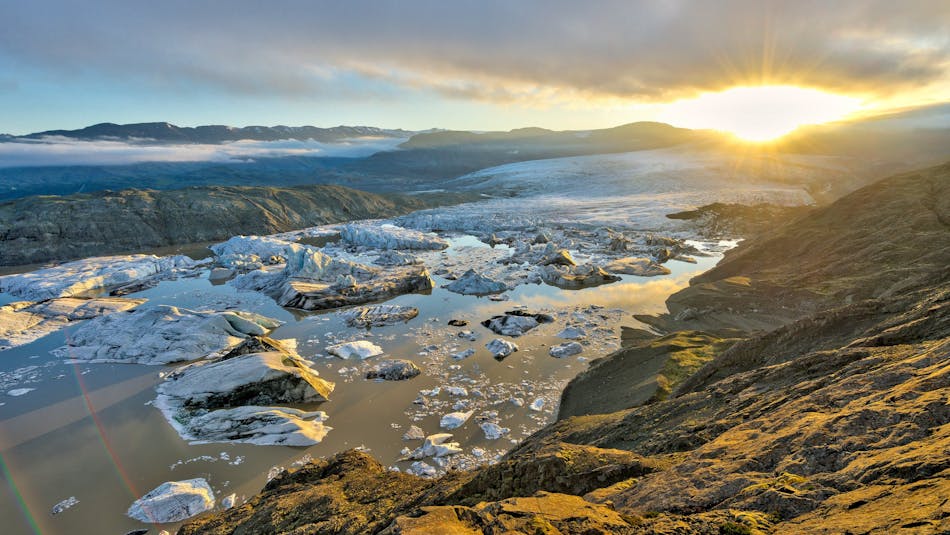
Vatnajökull National Park covers about 14 percent of Iceland, with eight volcanoes and glaical lagoons accessible along the southern coast; pictured is Hoffellsjökull.

Vatnajökull National Park covers about 14 percent of Iceland, with eight volcanoes and glaical lagoons accessible along the southern coast; pictured is Hoffellsjökull.